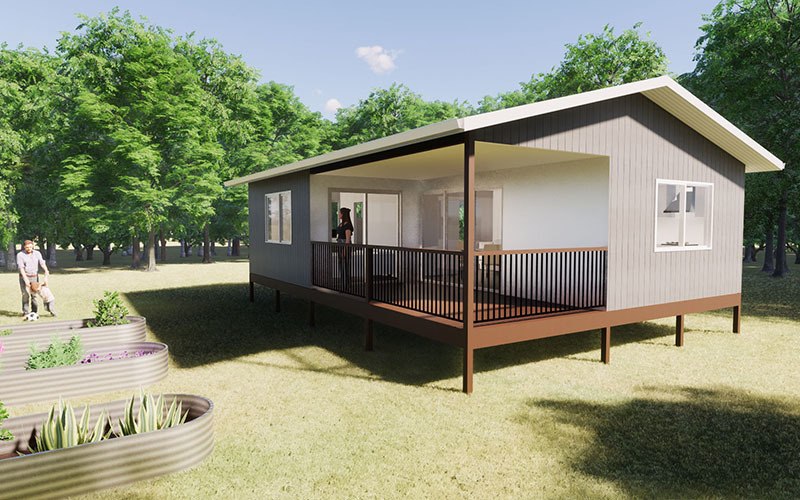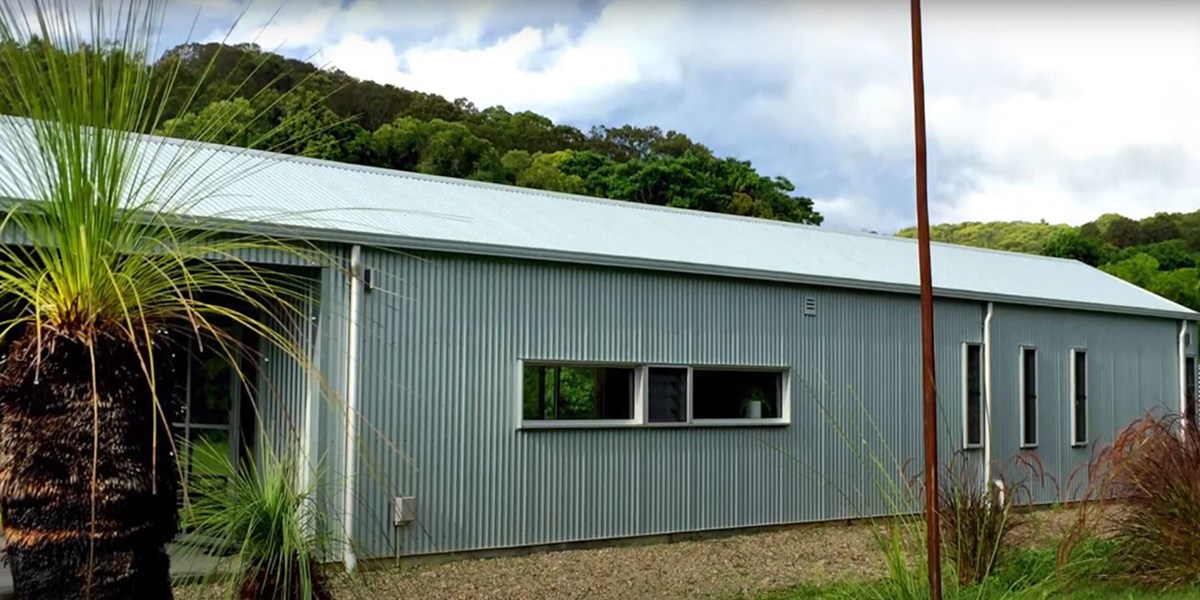
Vaughn and Louise talk about their experience living off-grid. Check out their usage data from 2018 to 2020: the savings and the lifestyle.
Data
What would off-grid living be without some facts and figures about reduced consumption and environmental impact? Vaughn and Louise embraced off-grid living on the Sunshine Coast in 2017. The total floor area of their Shed House is 120m2; it is a dual pavilion steel frame dwelling. Let’s have a look at their electrical, water, and gas usage from 2018-2020 and compare this with general household data.
Electrical = 7.5 kWh/day opposed to 17 kWh/day.
Over 306 days they used 7.58 kWh per day from their off-grid solar system. The average Australian household uses approx 17 kWh per day on average across four seasons (CSIRO website). They use less than half the Queensland household annual average (adults without children).
Water = 58 litres/day opposed to 370 litres/day (two people).
Over 8 months they used 14,000 litres of water from their tanks (2019 Autumn, Winter, Spring period, rain occurred in Dec); 1,750 litres per month or approx 58.3 litres per day for two adults. The overall water usage in south-east Queensland is 185 litres per person per day (sep 4, 2017, Google search) or 370 litres for two people per day. They use less than one sixth of the Brisbane household average.
Gas = 4.9 Mj/day opposed to 20.2 Mj/day.
Vaughn and Louise refill 9kg gas bottles each quarter at a cost of approx $30.00 ($120.00 annually). Their usage over 90 days is approximately 441 Mj or 4.9 Mj/day. The average Brisbane gas bill is $319 per month (20.2 Mj/day annually, Elgas website). They use on average one quarter of the annual gas consumption of a Brisbane household.
Start enjoying the off grid lifestyle, begin your obligation free quote on your customised home!
The Savings
Not only are Vaughn and Louise using fewer utility values than the average household in Brisbane, but all of their resources and utilities (except for the gas) are free. The cost savings with off-grid systems pay back the initial outlay quite quickly and provide higher cash flow and savings options to a family every day. They do have small ongoing maintenance costs such as effluent system inspections and maintenance (less than $350 annually), however this is still lower than most ‘on-grid’ quarterly sewerage access charges.
Overall, there are considerable cost savings when considering a twenty year (minimum) occupation of an off-grid home, not to mention the reduction in resource usage that impacts the environment.

Improving Your Lifestyle
The above usage comparisons are quite confronting considering the potential waste that occurs. Off-grid living is all about managing your lifestyle to effect low use and in turn provide a very affordable living environment. Vaughn and Louise acknowledge they couldn’t apply resourceful and efficient living without knowing their resource limits - the amount of water in their tanks, the percentage of power in their battery reserve, etc.
Vaughn and Louise encourage you to compare the data above against your own quarterly bills to calculate your own cost savings. If going fully off-grid is not feasible right now, you could consider installing water tanks or solar panels (with or without battery backup) and tear up your electricity and water/sewerage bills.
